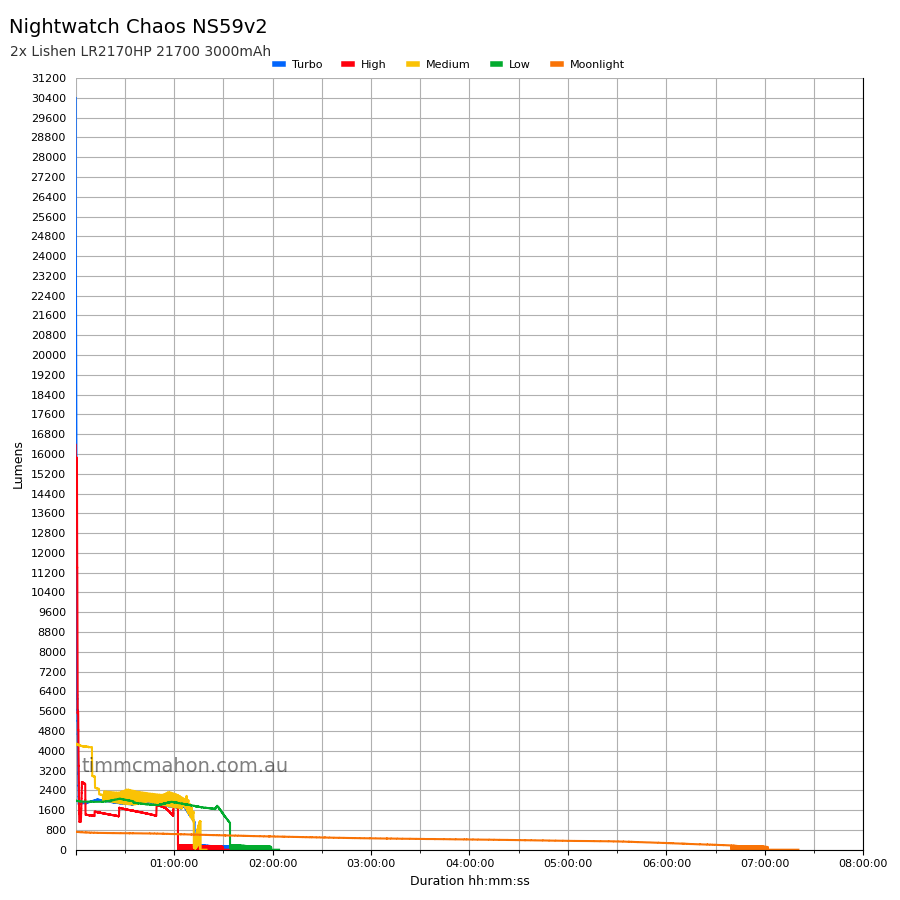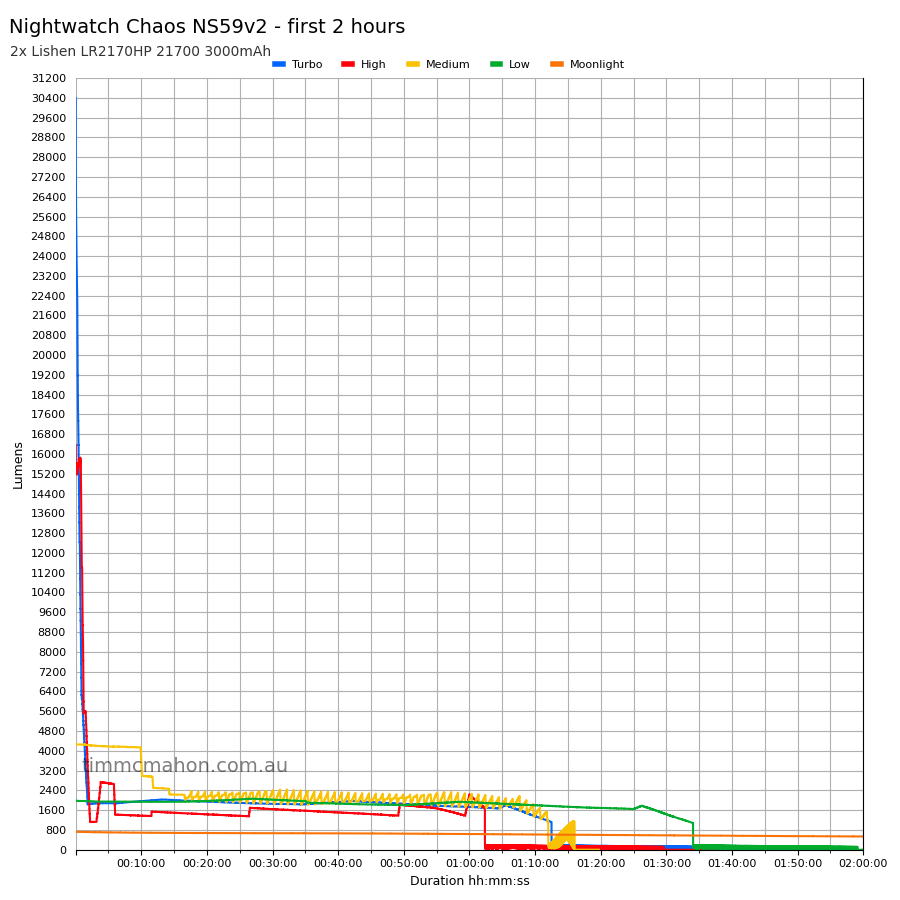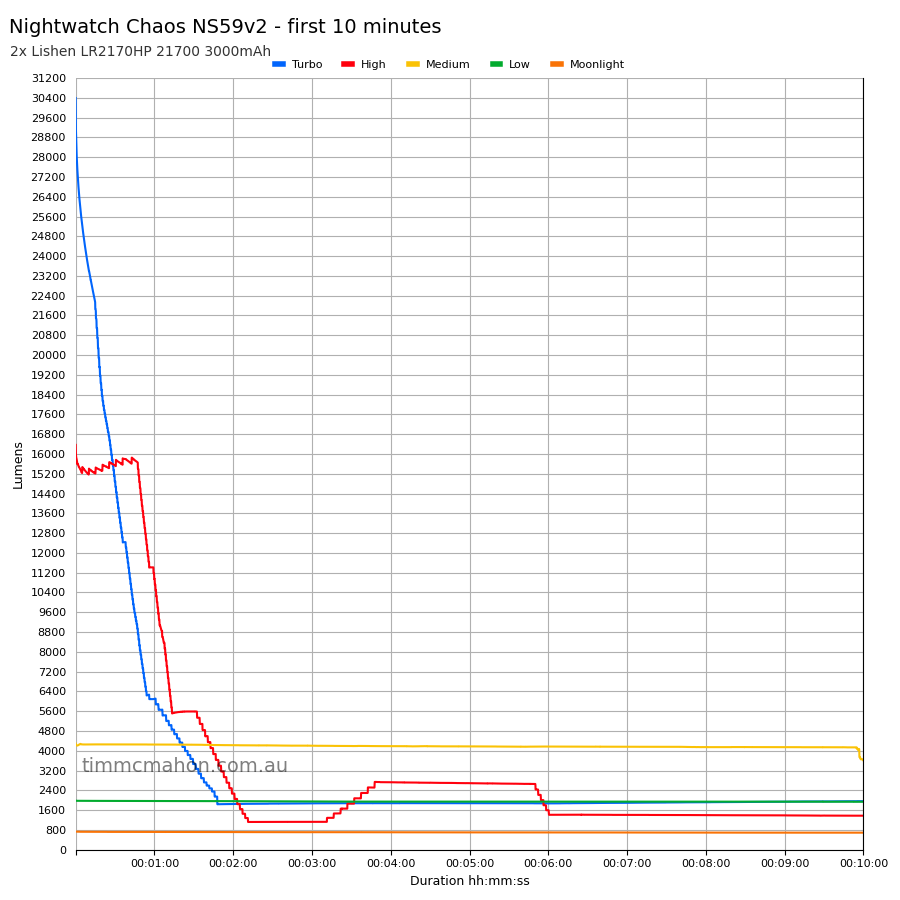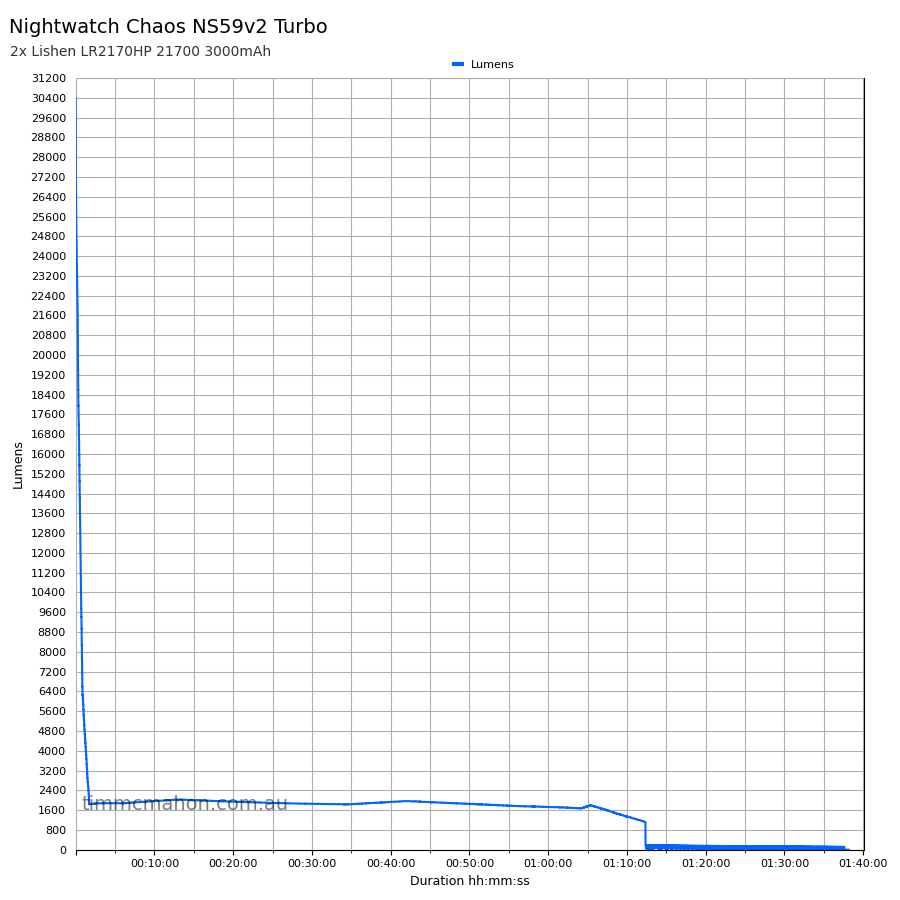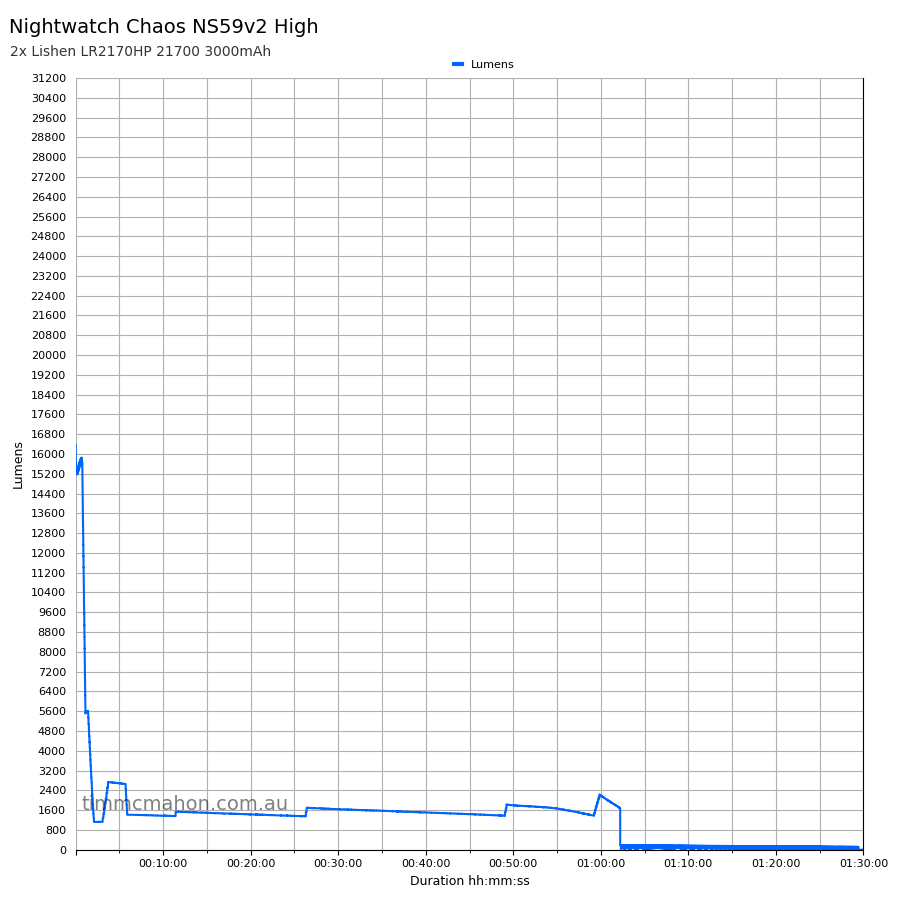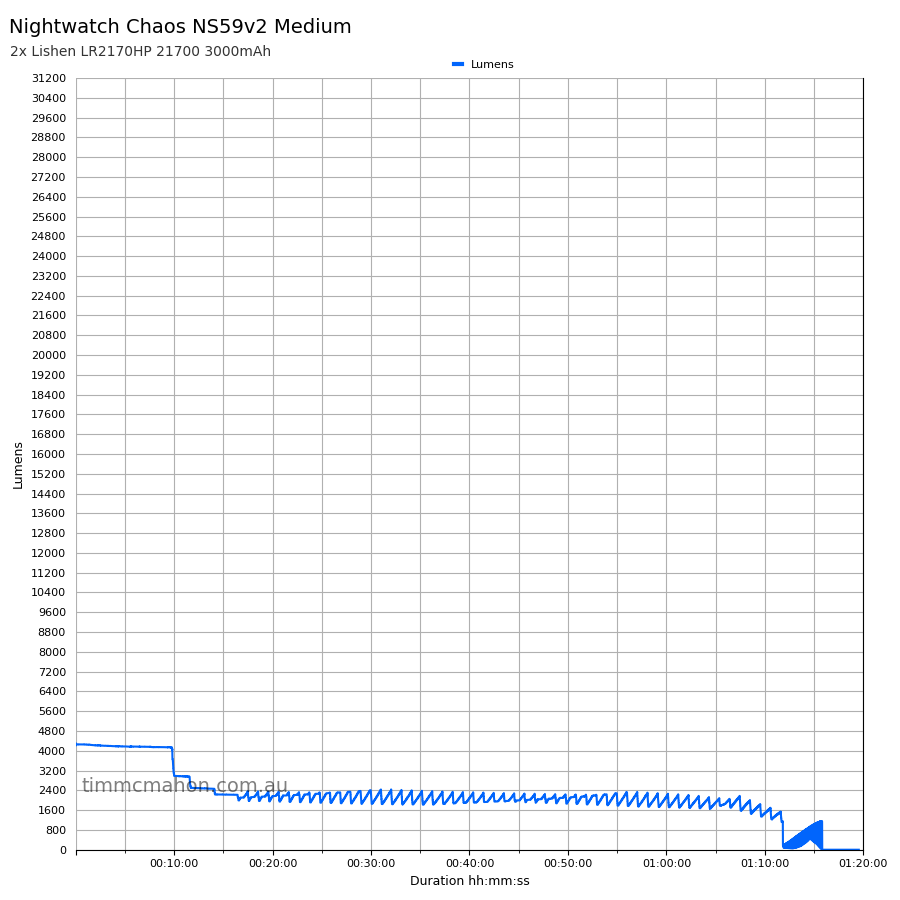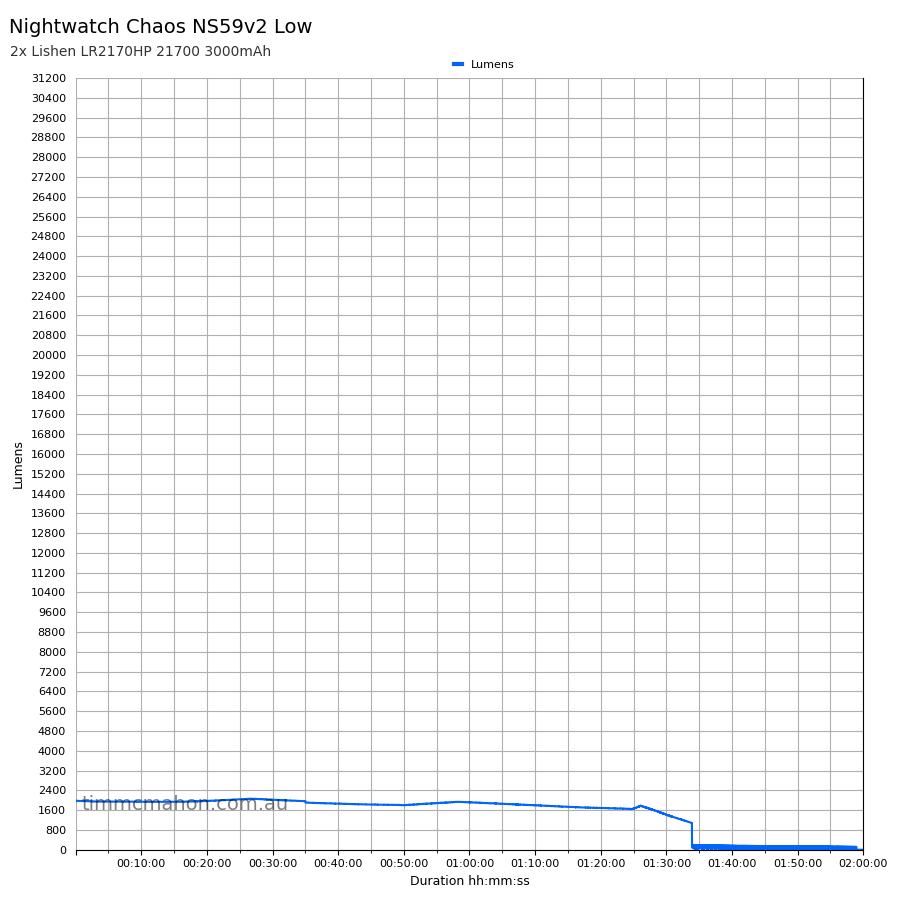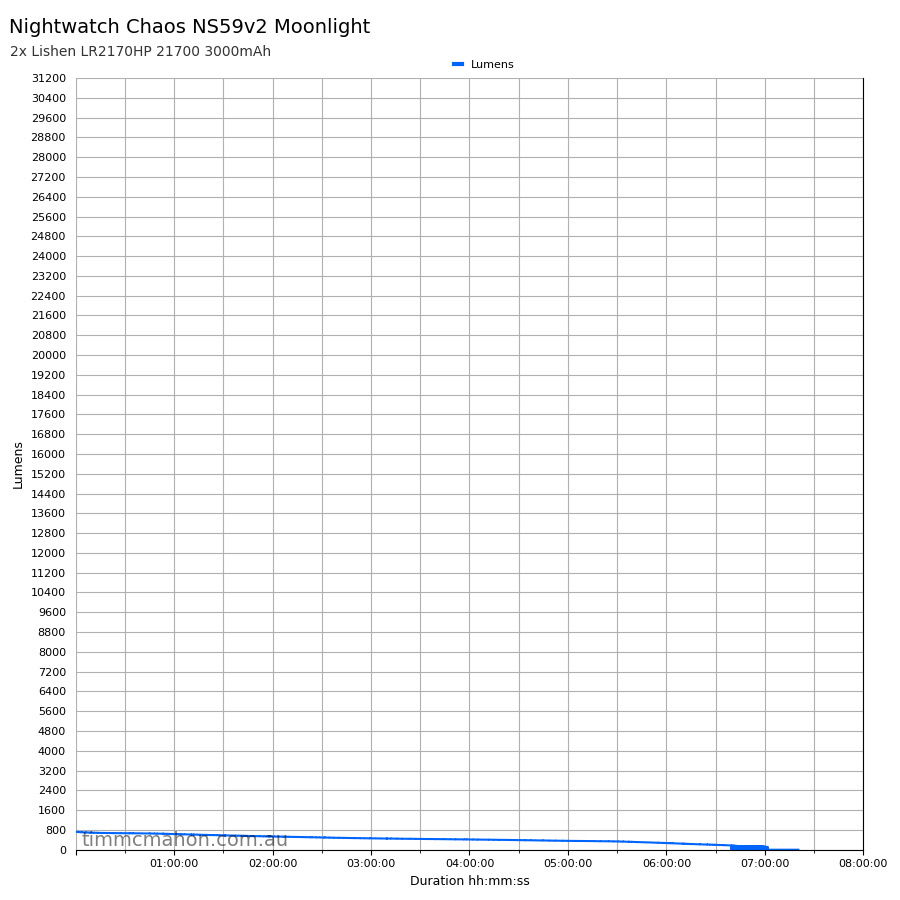Nightwatch Chaos NS59v2 9xSFQ60.3 Review
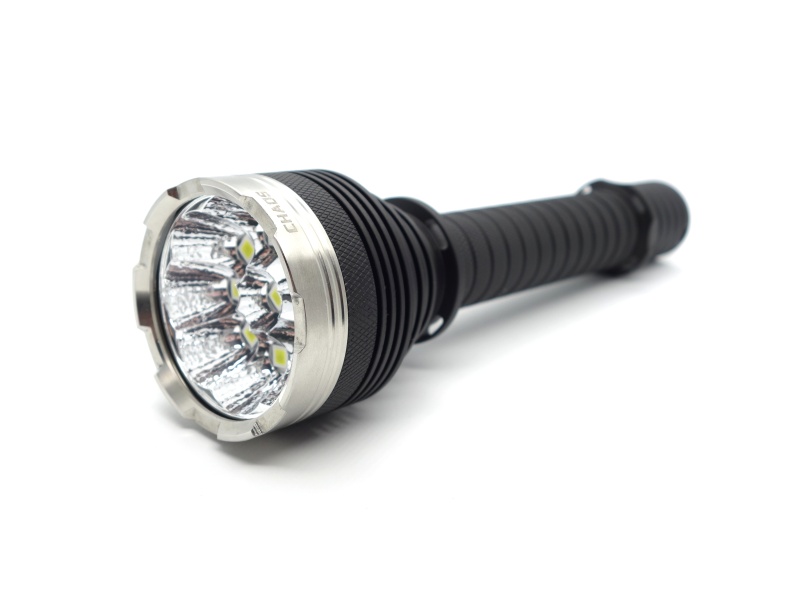
Nightwatch Chaos NS59v2 9xSFQ60.3#
- Specifications
- Introduction
- Torch in use
- Build quality
- LED, bezel, lens, reflector and beam
- Size and comparison
- User interface and driver
- Batteries and charging
- Performance
- Beamshots
- Conclusion
- Product page
Specifications#
| Brand/model | Nightwatch Chaos NS59v2 9xSFQ60.3 |
|---|---|
| LED | 9xSFN60.3 6000K |
| Maximum lumens | 32,000 lm |
| Maximum beam intensity | 150,000 cd |
| Maximum throw | 774 m |
| Battery | 2*21700 |
| Onboard charging | No |
| Material | Aluminium |
| Modes | 5 |
| Blinkies | Strobe |
| Reflector | OP |
| Waterproof | - |
| Review date | October 2022 |
Introduction#
The Nightwatch Chaos NS59v2 is a scary flooder with nine SFQ60.3 emitters.
Neal asked if I would like to review anything in his store. Nightwatch immediately came to mind after recently trading a torch for the Nightwatch NSX4. I searched his store and came across the NS59v2. It has a similar aesthetic to the NSX4 but it has nine emitters instead of four and it is powered by two 21700 cells in series instead of one 26800 cell.
This torch was sent by Nealsgadgets for review. I have not been paid for this review nor have I held back my opinions of this torch.
Packaging#
The NS59v2 came in a plain white cardboard box and bubble wrap to protect it.
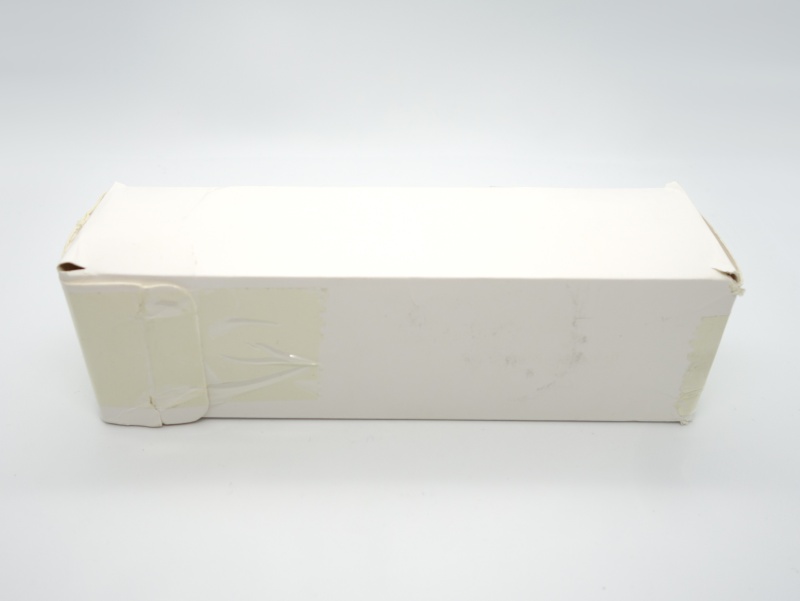
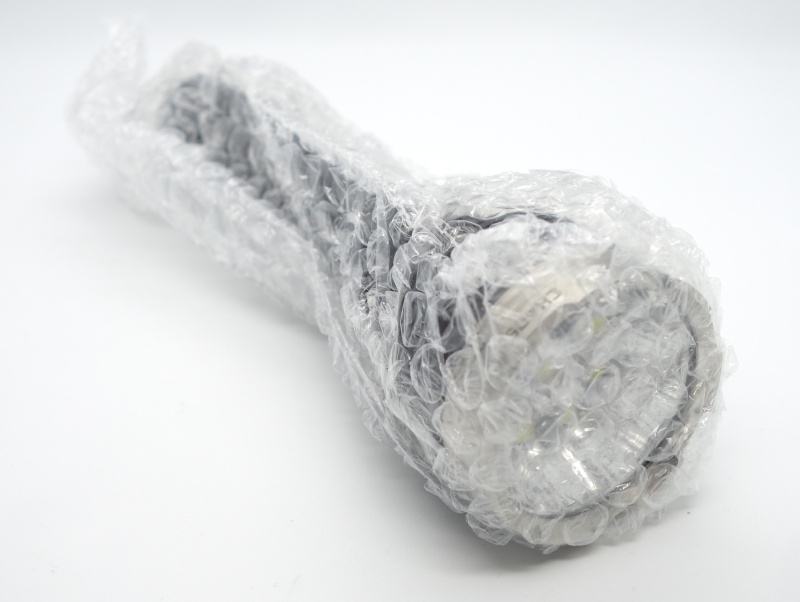
The following was included in the box:
- Nightwatch Chaos NS59v2 9xSFQ60.3
- Two button top Lishen LR2170HP 21700 3000mAh cells
Torch in use#
The Nightwatch Chaos NS59v2 feels like a hefty duty light in one hand.
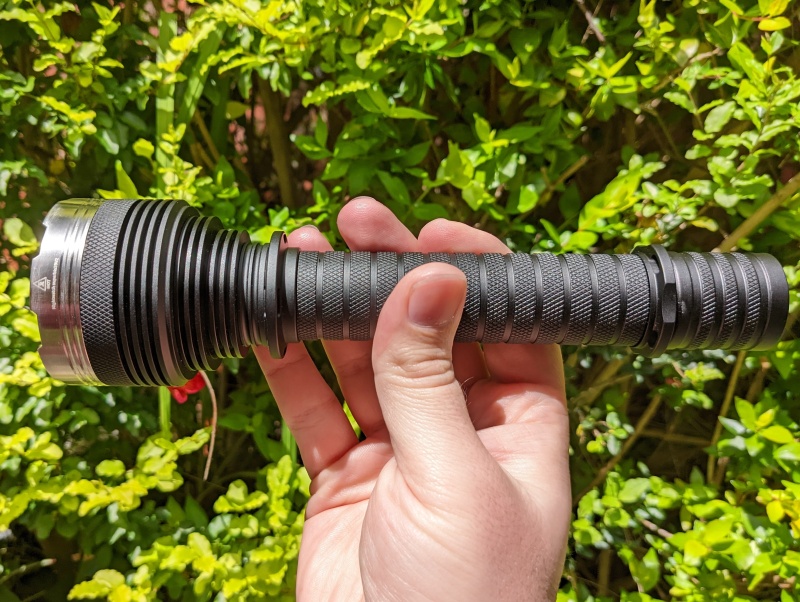
It is top heavy but the aluminium cigar grip near the tail helps prevent the torch from sliding out of my hand. Knurling provides plenty of grip.
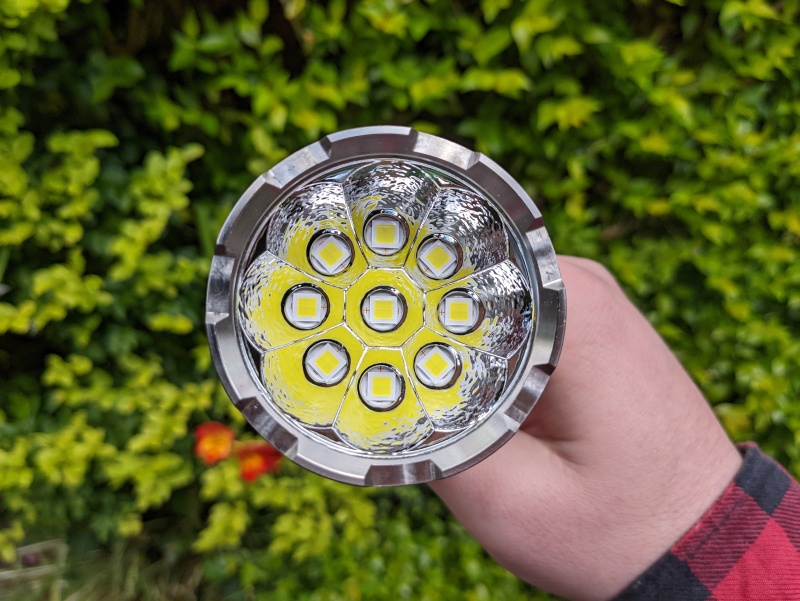
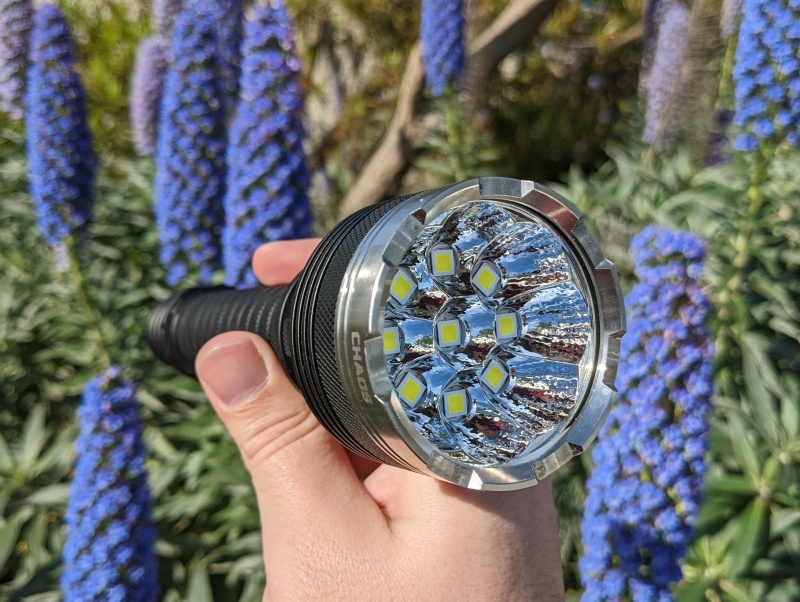
Two smooth and large lanyard holes have been cut into the side of the tailcap to allow the torch to tailstand while a lanyard is attached. The torch can tailstand due to the mechanical tailswitch being slightly below the edge of the tailcap.
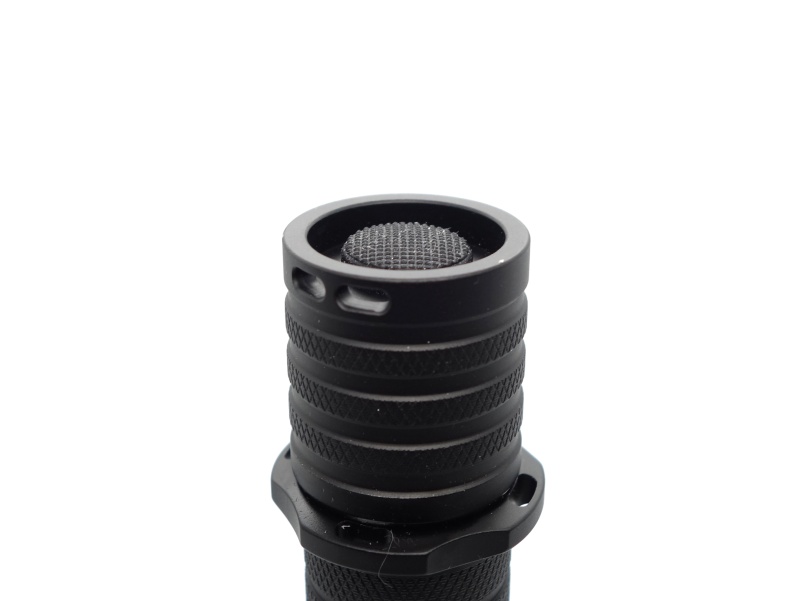
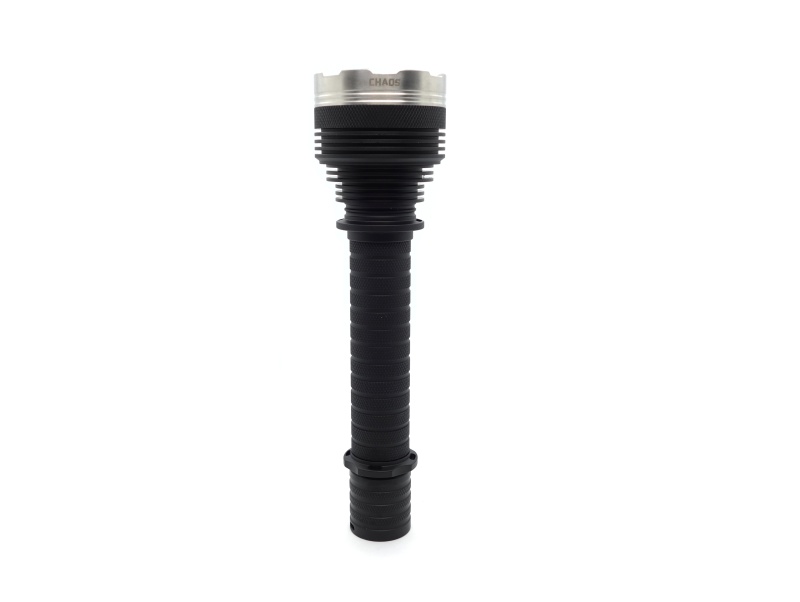
The reverse-clicky tailswitch gives a satisfying click. It would be nice if a forward-clicky tailswitch was used instead so that the mode can be changed before the light has been clicked on.
This torch could be used as a duty light. I just use it to light up an entire field and giggle. It is a lot of fun!
Build quality#
The Nightwatch Chaos NS59v2 has anodised aluminium with a matte black finish. The tube is anodised on the inside too.
There are no sharp edges. Knurling on the head, tube and tail provide plenty of grip.
Aluminium cigar grips also help prevent the torch from slipping out of my hand. However, they do not prevent the torch from rolling away on a flat surface.
Each cigar grip has four long holes that could be used to clip a strap to.
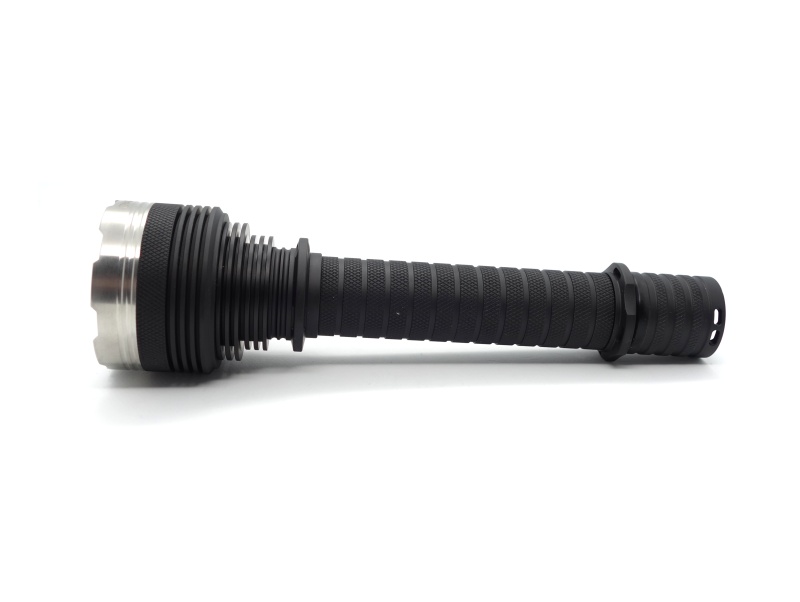
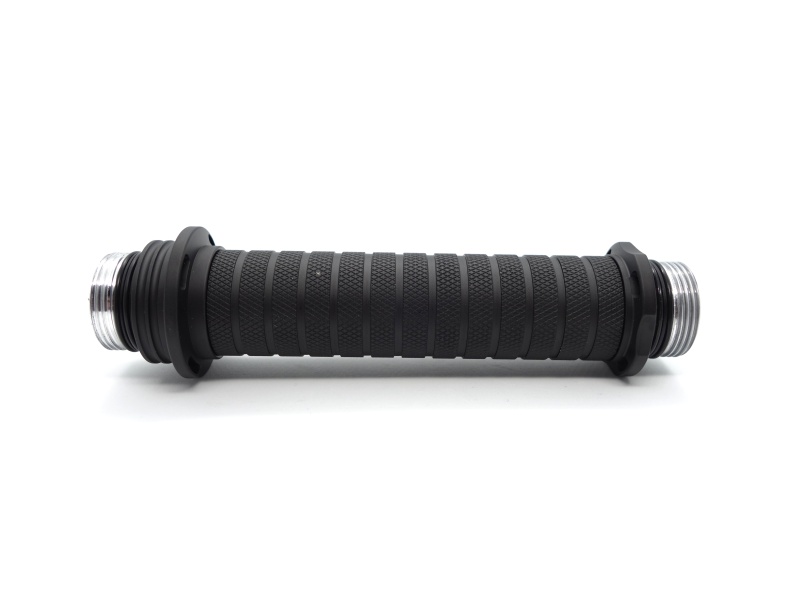
The torch came with a few scratches on the head and the tube. This is to be expected due to the manufacturer keeping the cost down for enthusiasts.
The threads at the tail came lubricated with Molykote HSC Plus Paste to improve the electrical conductivity. I found that my hands kept getting paste on them because it would transfer from the threads and onto the batteries.
Both ends of the tube have two o-rings to help prevent water getting in.
The threads at the head have not been lubricated.
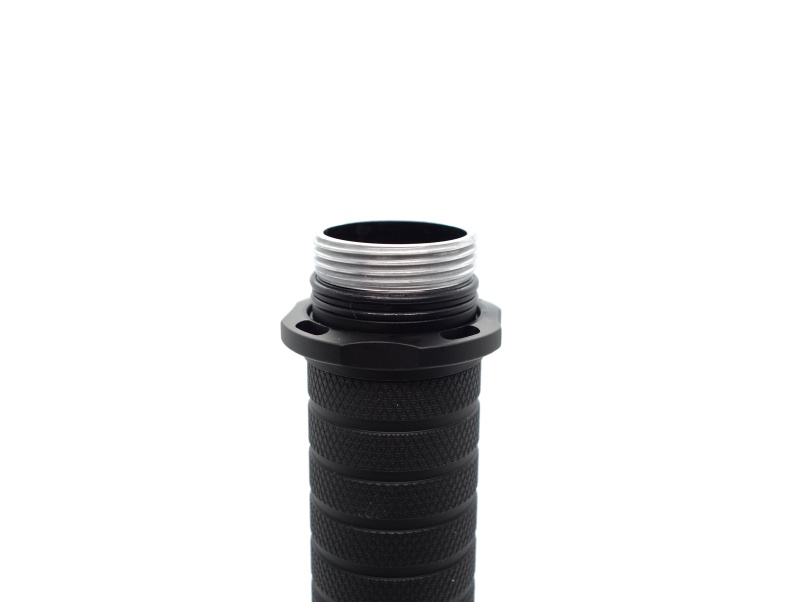
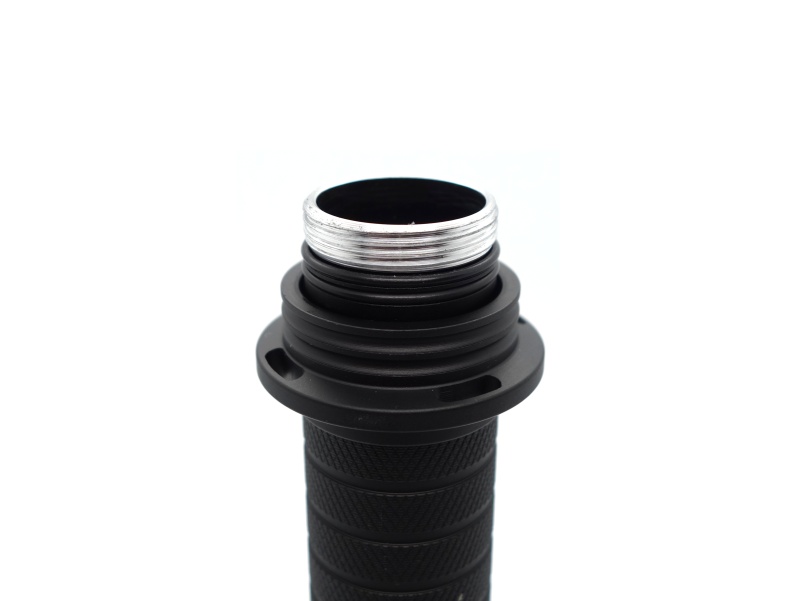
The tailswitch and driver are both held down with brass retaining rings and the stainless steel bezel unscrews from the head. This torch is enthusiast friendly (no glue!).
The driver has a long a smooth pill for a battery to press against and the tailcap has a spring-bypass to reduce the resistance.
Two button top 21700 cells are a tight fit and they became slightly dented over time.
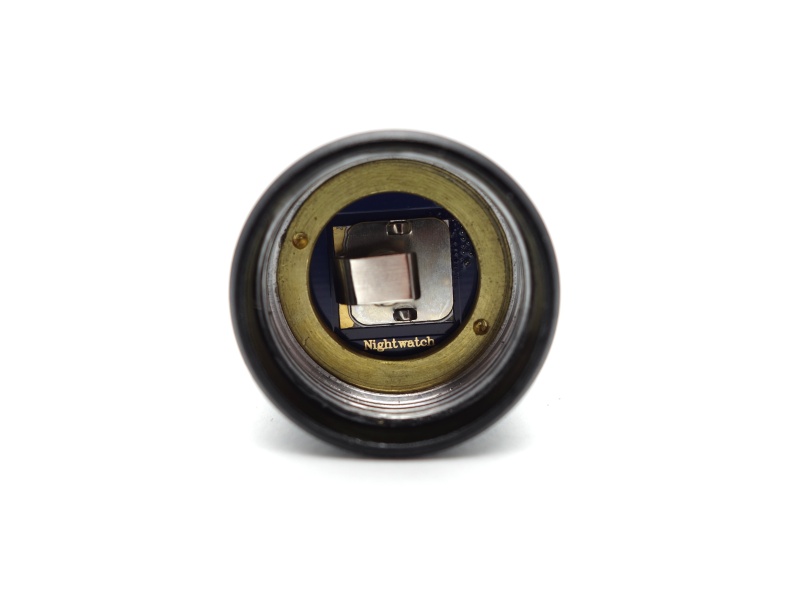
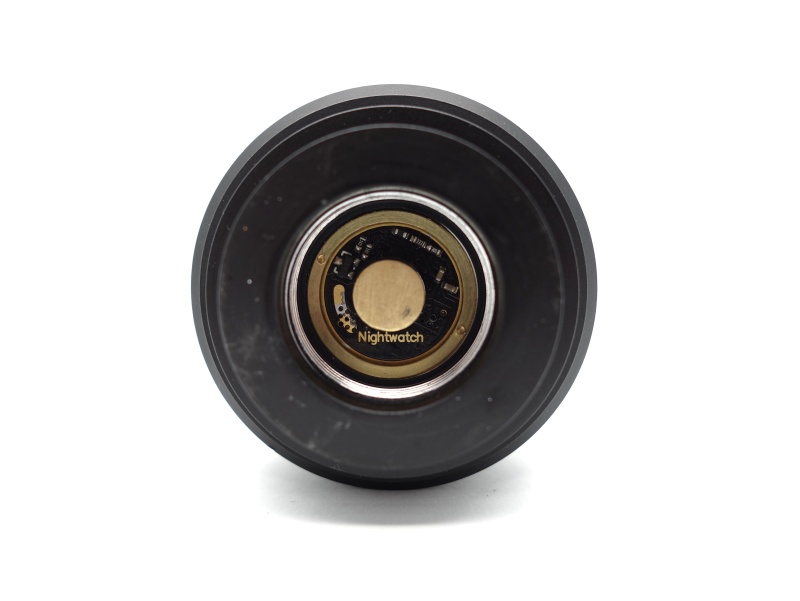
LED, bezel, lens, reflector and beam#
The NS59v2 has a stainless steel bezel with “Chaos” etched on one side and “v2” on the other.
Nine cool white SFQ60.3 emitters are spread out in an orange peel reflector to produce a smooth wall of light.
Heat appears to transfer sufficiently from the nine emitters to the MCPCB (metal core printed circuit board), and then to the head of the torch. These emitters did not burn themselves while performing multiple Turbo runtime tests. There was a report of one of the LEDs developing a burn mark in an earlier version of the torch, as seen in the Nightwatch NS59v1 review on 1lumen.com.
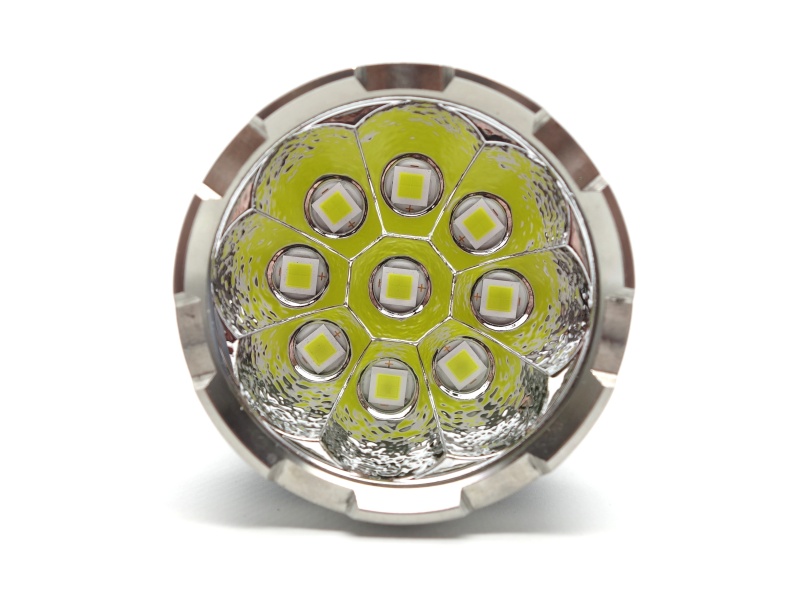
I have taken Correlated Colour Temperature (CCT) and Colour Rendering Index (CRI, RA of R1-R8) measurements with the torch positioned two metres away from an Opple Light Master Pro III (G3) for each mode except Turbo. Turbo was measured at three metres.
The CCT is around 5500K on lower modes and 5900K on High and Turbo. The CRI is around 65.
The Delta u, v is slightly positive (green) on lower modes and closer to pure white on Turbo.
The beam has a smooth white hotspot with a slightly green corona that blends into the spill on Moonlight, Low and Medium when looking at a white wall. A white wall of light is produced with High and Turbo!
The stainless steel bezel does not create an annoying ring. The arrangement of the emitters in the orange peel reflector causes a flower pattern to be produced.
| Mode | CCT (K) | CRI (Ra) | x | y | Duv |
|---|---|---|---|---|---|
| Moonlight | 5411 | 64.0 | 0.3348 | 0.3605 | 0.0087 |
| Low | 5457 | 64.1 | 0.3336 | 0.3585 | 0.0082 |
| Medium | 5514 | 64.6 | 0.3321 | 0.3563 | 0.0078 |
| High | 5885 | 66.2 | 0.3239 | 0.3420 | 0.0044 |
| Turbo | 5948 | 68.0 | 0.3228 | 0.3368 | 0.0023 |
Calculate Duv from CIE 1931 xy coordinates
Dimensions and size comparison#
Dimensions#
I took the following measurements using digital callipers.
| Measurement | Unit (mm) |
|---|---|
| Torch length | 213.9 |
| Head diameter | 58.2 |
| Tube diameter | 28.1 |
| Tailcap diameter | 30.0 |
Weight#
I took the following measurements using a digital scale.
| Weight | Unit (g) |
|---|---|
| Torch | 352.9 |
| Battery 1 | 68.6 |
| Battery 2 | 69.1 |
| Torch with batteries | 490.6 |
Size comparison with its competition#
From left to right: Nightwatch Chaos NS59v2 9xSFQ60.3, Nightwatch NSX4, Sofirn SP36 BLF, Sofirn Q8 Plus
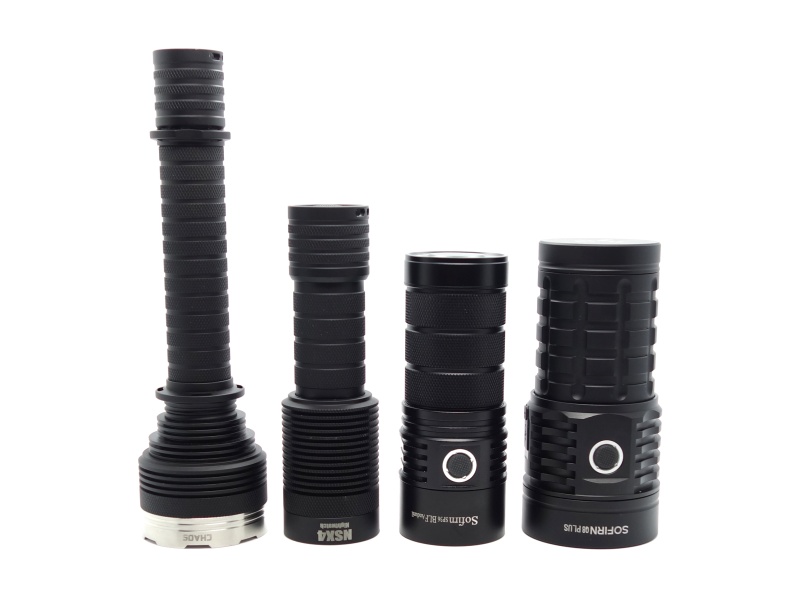
From left to right: Nightwatch Chaos NS59v2 9xSFQ60.3, Nightwatch NSX4, Sofirn SP36 BLF, Sofirn Q8 Plus
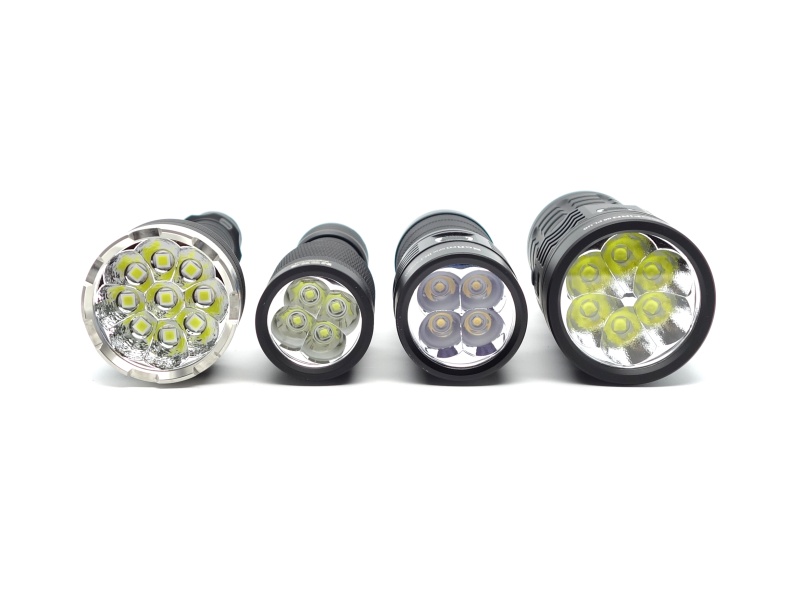
User interface and driver#
The reverse-clicky tail switch may be clicked to turn the torch on and then half-pressed to change modes.
| State | Action | Result |
|---|---|---|
| Off | 1C | On (mode memory) |
| On | Half press | Cycle (Moonlight, Low, Medium, High) |
| On | 1C | Off |
| On | Double half press | Turbo |
| On | Triple half press | Strobe |
Strobe#
The strobe frequency appears to be consistent.
Low voltage protection#
There is low voltage protection but the battery might drain to 0V if you leave it on for a few days. The torch started flashing around 5.93V to indicate that the voltage is low. It turned off at 5.82V and a current of 53mA continued to be drawn.
PWM#
I did not notice any visible PWM (flickering).
What I like about the UI#
- It is simple and easy to use.
What could be improved#
- I prefer a forward-clicky tail switch.
Batteries#
Two high drain button top Lishen LR2170HP 21700 3000mAh cells were included inside the torch. The cells arrived with a voltage of 3.07V and 3.75V, and they were isolated with a piece of plastic. I measured capacity of 2897mAh and 2959mAh with a Vacpcell S4 Plus (500mA).
Nighwatch mentioned that the NS59v2 requires two Lishen LR2170HP 21700 cells capable of a 60A peak current.
The NS59v2 is the first torch that I have used where the batteries are in series. The fact that the torch can draw over 50 amps made me concerned about the capability of the 21700 cells being used. I tried some Samsung 40T cells but the lumen output was much lower than expected. I would recommend getting the optional Lishen LR2170HP 3000mAh cells for the best performance!
I discharged the two Lishen cells in a Vapcell S4 Plus and charged them in parallel in an XTAR PB2S to balance the voltages. I had used one of the cells while reviewing the Nightwatch NG01 and they had become unbalanced.
While conducting runtime tests, I charged the two cells in a Vapcell S4 Plus and they finished charging with a difference of about 0.002V. It is best to ensure that the voltages are the same when connecting batteries in series. I would not recommend mixing 21700 cells in this torch. It is a lumen monster!
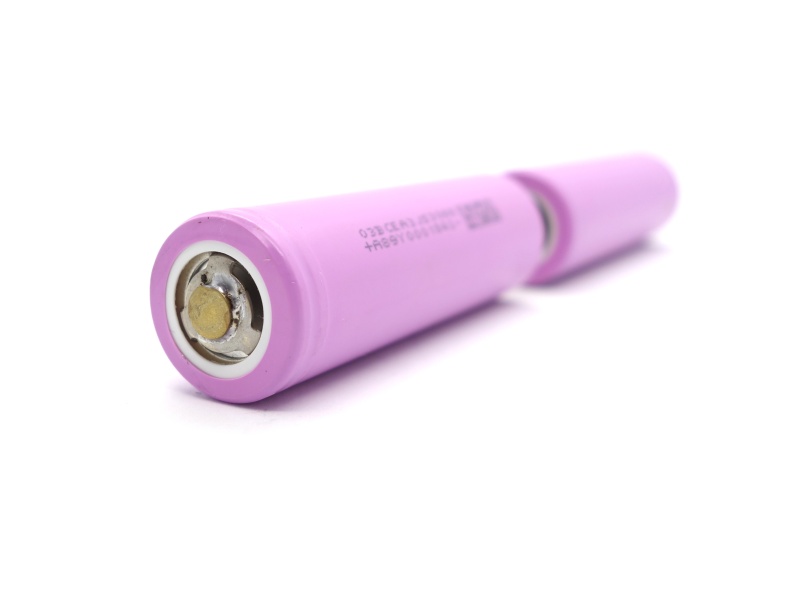
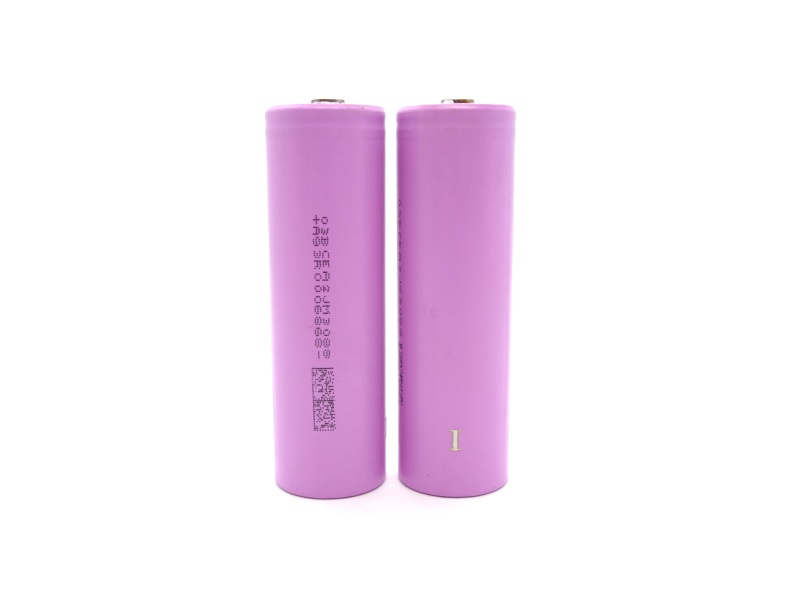
Driver#
Here is a teardown of the driver and tailswitch.
The retaining ring for the driver can be unscrewed with tweezers or a camera wrench spanner tool. However, the driver cannot be removed without first desoldering the wires from the MCPCB.
To get access to the MCPCB, I unscrewed the bezel for the head and then knocked the head against the table to get the reflector to pop out.
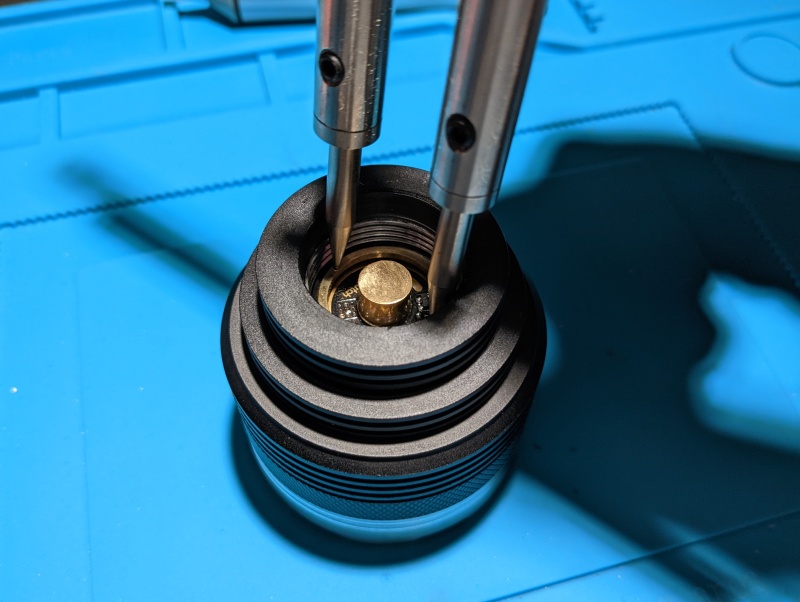
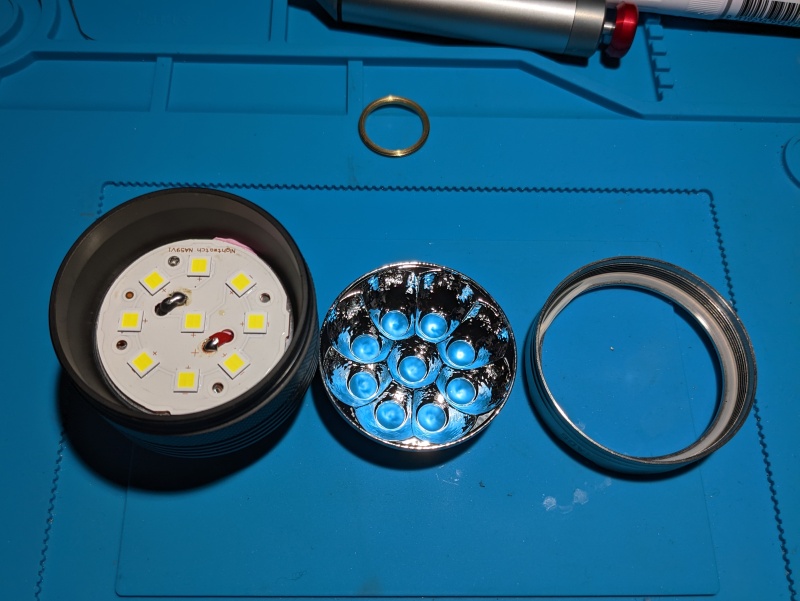
I ended up cutting the wires with flush cutters and removing one screw so that I could lift the MCPCB up with a hook.
Very little thermal paste was used I found a blob of something sitting between the shelf of the torch and the driver.
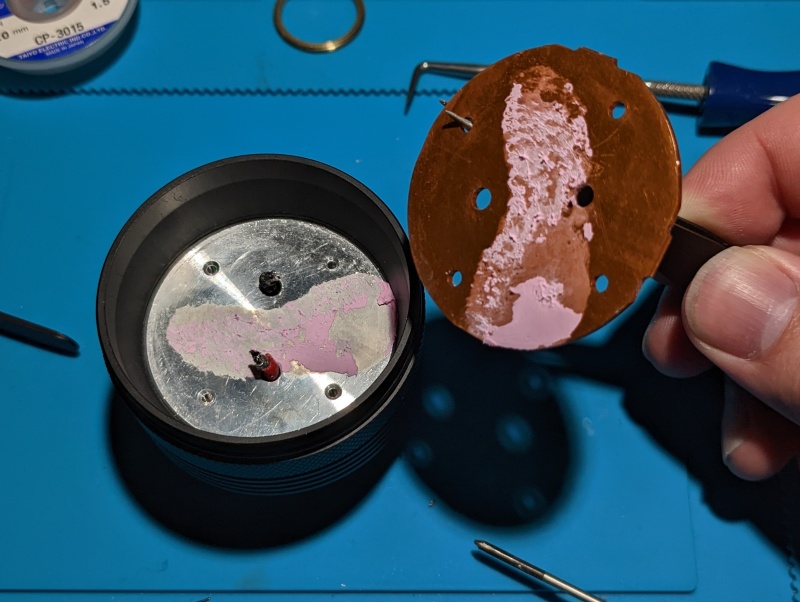
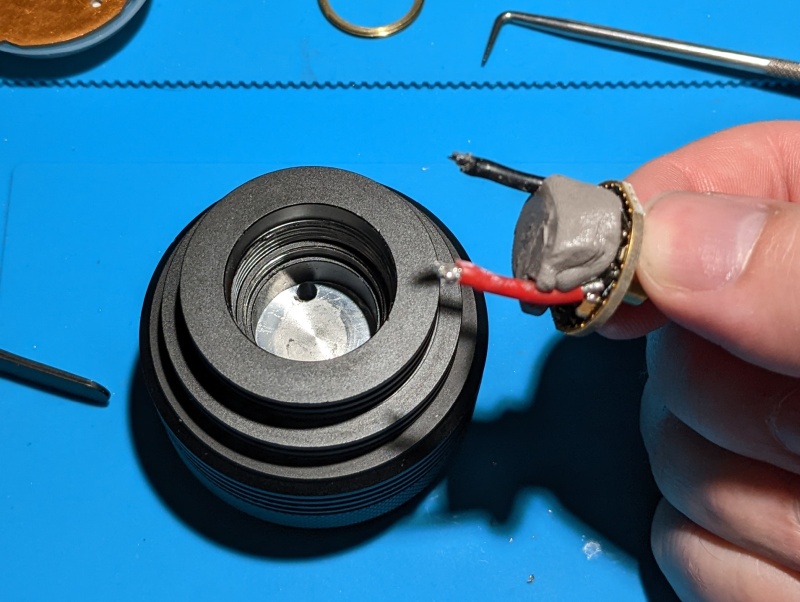
Driver photos!
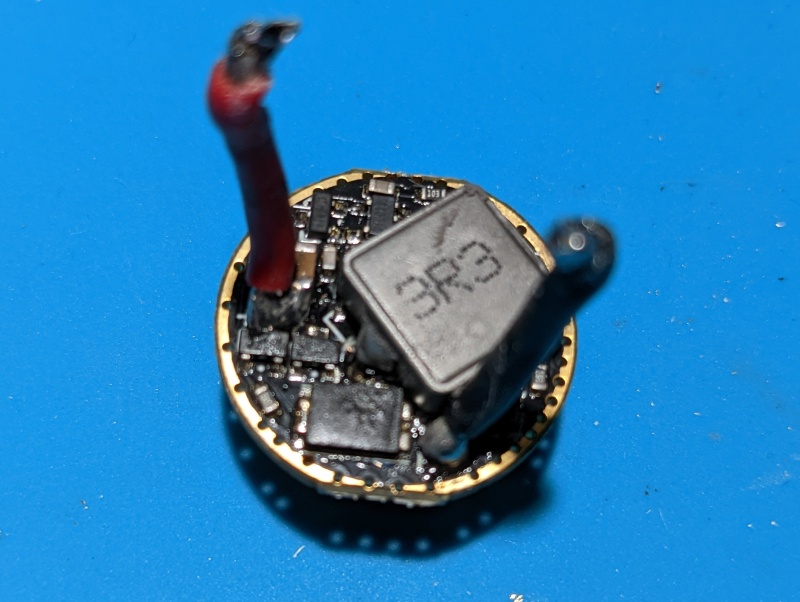
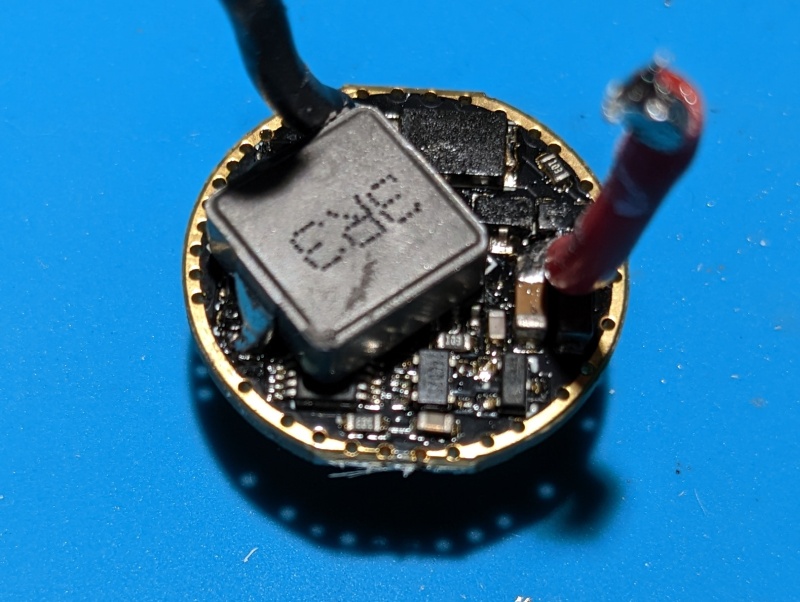
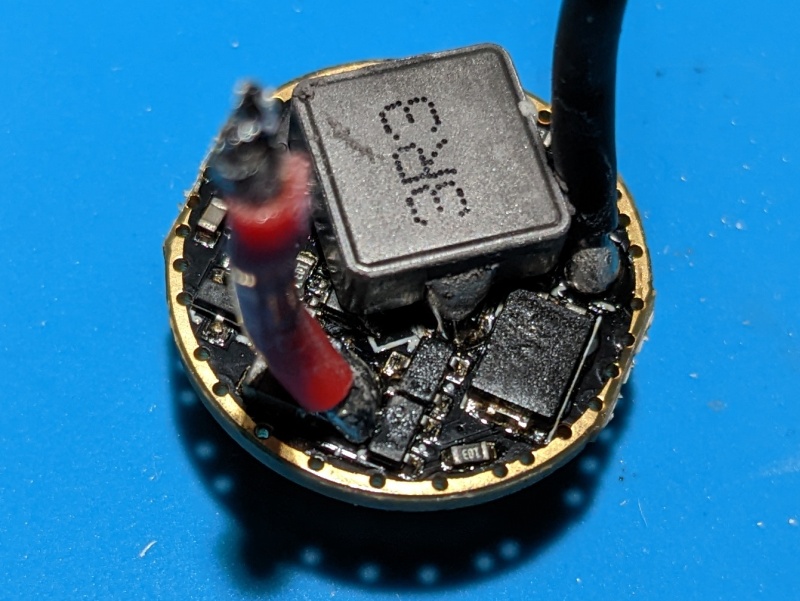
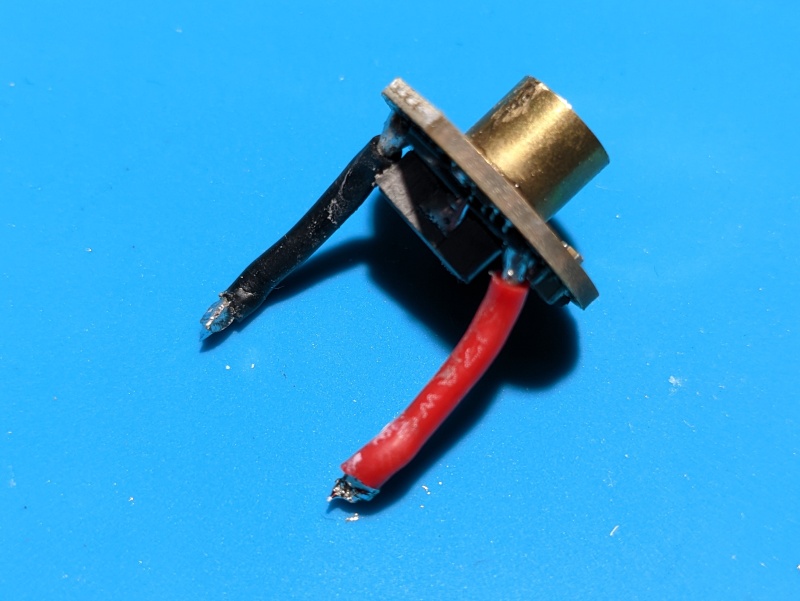
The retaining ring in the tailswitch can be unscrewed with tweezers to access the switch PCB. It has a massive switch!
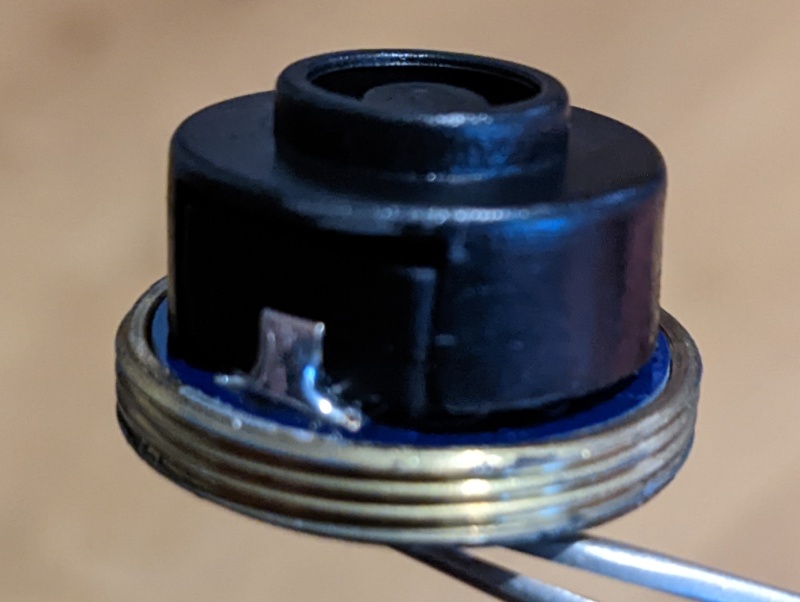
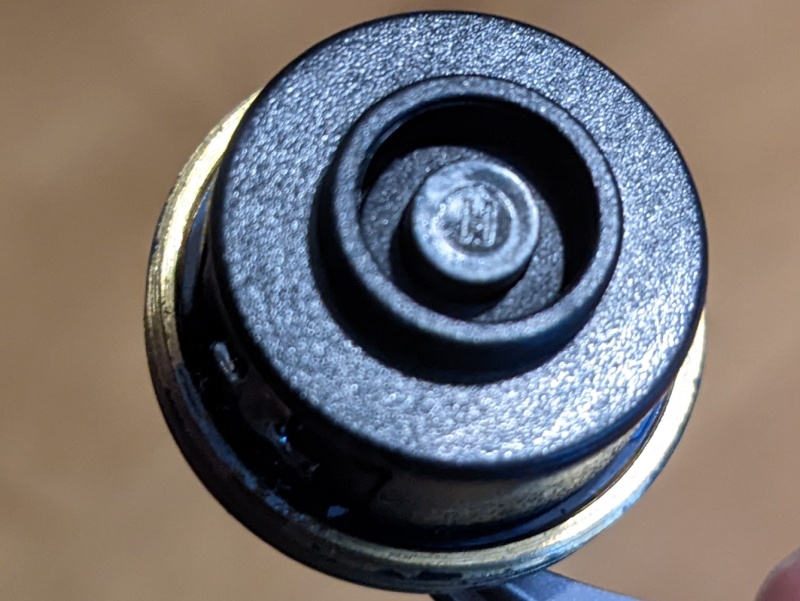
I replaced the thermal paste and managed to get the torch to work after the teardown. It now easily draws 50A on Turbo.
Performance#
Specifications:
| Turbo | High | Medium | Low | Moonlight | |
|---|---|---|---|---|---|
| Current (A) | 60.0 | 25.0 | 3.0 | 0.7 | |
| Light Output (lm) | 31,000 | 17,000 | 5,000 | 2,400 | 780 |
| Beam Intensity (cd) | 150,000 | - | - | - | - |
| Beam Distance (m) | 774 | - | - | - | - |
The manufacturer tested with a Lishen LR2170LA 21700 4000mAh cell.
Lumen measurements#
I used a UNI-T UT210E clamp meter to measure the current at turn on.
| Mode | Amps at start | Specs | Lumens @turn on | Lumens @30 sec | Lumens @10 min |
|---|---|---|---|---|---|
| Moonlight | 0.59 A | 780 | 737 | 721 | 689 |
| Low | 1.70 A | 2,400 | 1,990 | 1,972 | 1,939 |
| Medium | 3.70 A | 5,000 | 4,294 | 4,258 | 2,985 |
| High | 23.30 A | 17,000 | 16,367 | 15,529 | 1,374 |
| Turbo | 50.10 A | 31,000 | 30,390 | 14,895 | 1,965 |
Sparks were flying while I was measuring Turbo with 8awg wire at the tailcap with a clamp meter.
Standby drain#
There is no standby drain. This torch has a mechanical tail switch.
Runtime graphs#
I used my own DIY lumen tube with a TSL2591 sensor and forked bmengineer’s project RuTiTe to record runtimes.
Note: Lumen measurements may be off by 10% with my DIY lumen tube.
Turbo started at 30,390 lm, quickly dropped to 15,529 lm by thirty seconds, continued to drop to 1,900 lm by two minutes, maintained around 1,600 lm until 1 hour 12 minutes, and finally dropped to 110 lm until 1 hour 32 minutes. Room temperature was 17C. I measured a maximum temperature of 78.C at the head of the torch with an Infrared Thermometer after a few minutes. The torch gets unbearably hot to hold within a few minutes.
High started at 16,367 lm, dropped to 1,600 by two minutes, maintained around 1,600 lm until 1 hour 2 minutes and finally dropped to 110 lm until 1 hour 30 minutes. Room temperature was 15C. I measured a maximum temperature of 63.4C at the head of the torch.
Medium started at 4,294 lm, maintained 4,000 lm for almost 10 minutes, dropped to 2,000 lm at 10 minutes and maintained that output for almost 1 hour 12 minutes. Output zig-zagged a bit while trying to maintain 2,000 lm and became unstable after 1 hour 12 minutes. Room temperature was 12C. I measured a maximum temperature of 20C at the head of the torch.
Low started at 1,990 lm, maintained 1,900 lm for almost 1 hour 25 minutes, dropped sharply to 110lm at 1 hour 34 minutes, and finally switched off just before 2 hours. Room temperature was 17C.
Moonlight, if you can call it that, started at 737 lm and gradually dropped to 110 lm over 7 hours.
Regulation was all over the place with High and Medium. It was fairly stable for Turbo and Low so you can use this as a general purpose light. But I would be more inclined to use this torch for giggles. It makes a wall of light!
Throw#
I took lux measurements with a UNI-T UT383BT at 30 seconds at a distance of five metres for each mode.
| Mode | Specs (cd) | Specs (m) | Candela measured (cd) | Distance (m) |
|---|---|---|---|---|
| Moonlight | 3,475 | 117 | ||
| Low | 9,500 | 194 | ||
| Medium | 20,650 | 287 | ||
| High | 78,050 | 558 | ||
| Turbo | 150,000 | 774 | 91,925 | 606 |
Throw numbers were a little lower than the official specifications (774m vs 606m). This torch is definitely more of a flooder than a thrower!
Beamshots#
I went to a local park and aimed the Nightwatch Chaos NS59v2 9xSFQ60.3 at a tree 70 metres away while using Turbo. I think this is the first time that you can clearly see the tree in the background about 70 metres away.
Beamshots were taken using a Sony RX100M2 using 3.2", f3.2, ISO 100, 5000K WB.
Nightwatch Chaos NS59v2 9xSFQ60.3#
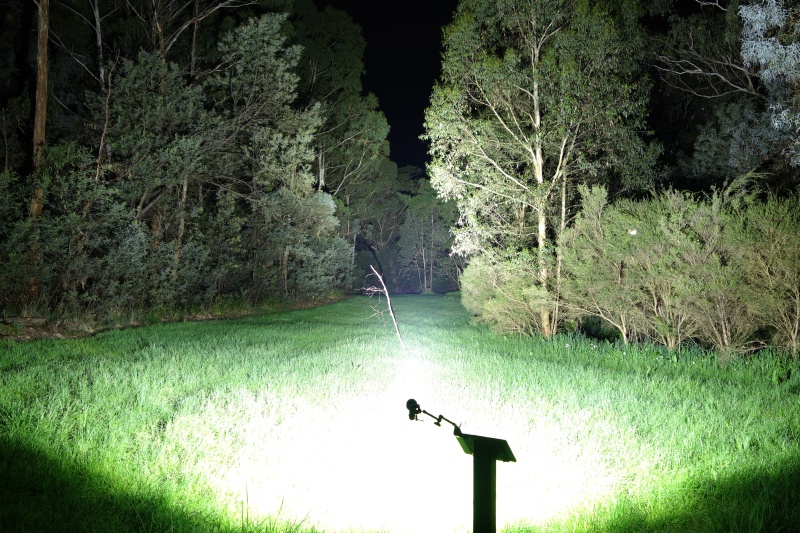
Cyansky P25 V2.0#
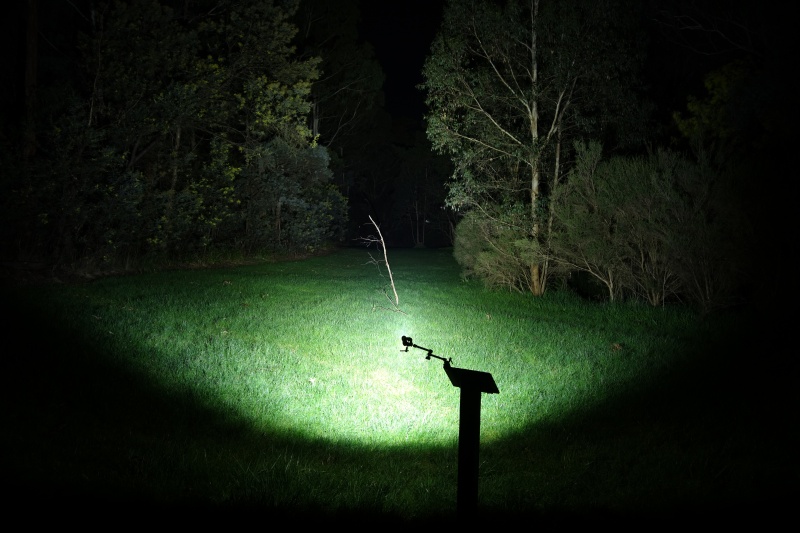
Olight Warrior Mini 2#
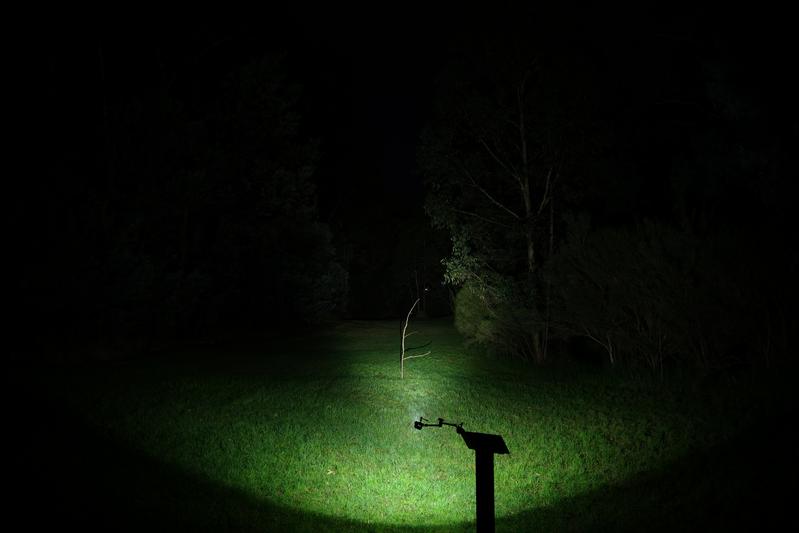
Conclusion#
The Nightwatch Chaos NS59v2 is a scary fun flooder!
It produces 31,000 lumens for a split second with two Lishen LR2170HP 21700 3000mAh cells in series and pulls a whopping 50 amps. This translates into a massive wall of light that makes me giggle.
The build quality is good for the price. It is a budget flooder for enthusiasts.
Runtimes for Turbo and Low were better than expected. However, it would have been nice to see better regulation for Medium and High.
You could consider the Acebeam X75 or Imalent MS18 for powerful flooders with longer runtimes if money is not a concern.
I highly recommend the Nightwatch Chaos NS59v2, with the optional Lishen LR2170HP cells, as a cost effective flooder.
Pros:#
- Scary fun!
- Good build quality.
- Good regulation.
- Nice tint on High and Turbo.
Cons:#
- Low voltage protection has an issue.
- Tint is a little green on lower modes.
Product page#
Promo code: TimMcAU
Promo code: TIMMC
Nealsgadgets.com affiliate link
I may earn a commission if you use an affiliate link or a promo code. This will help fund future torch reviews and tutorials.
